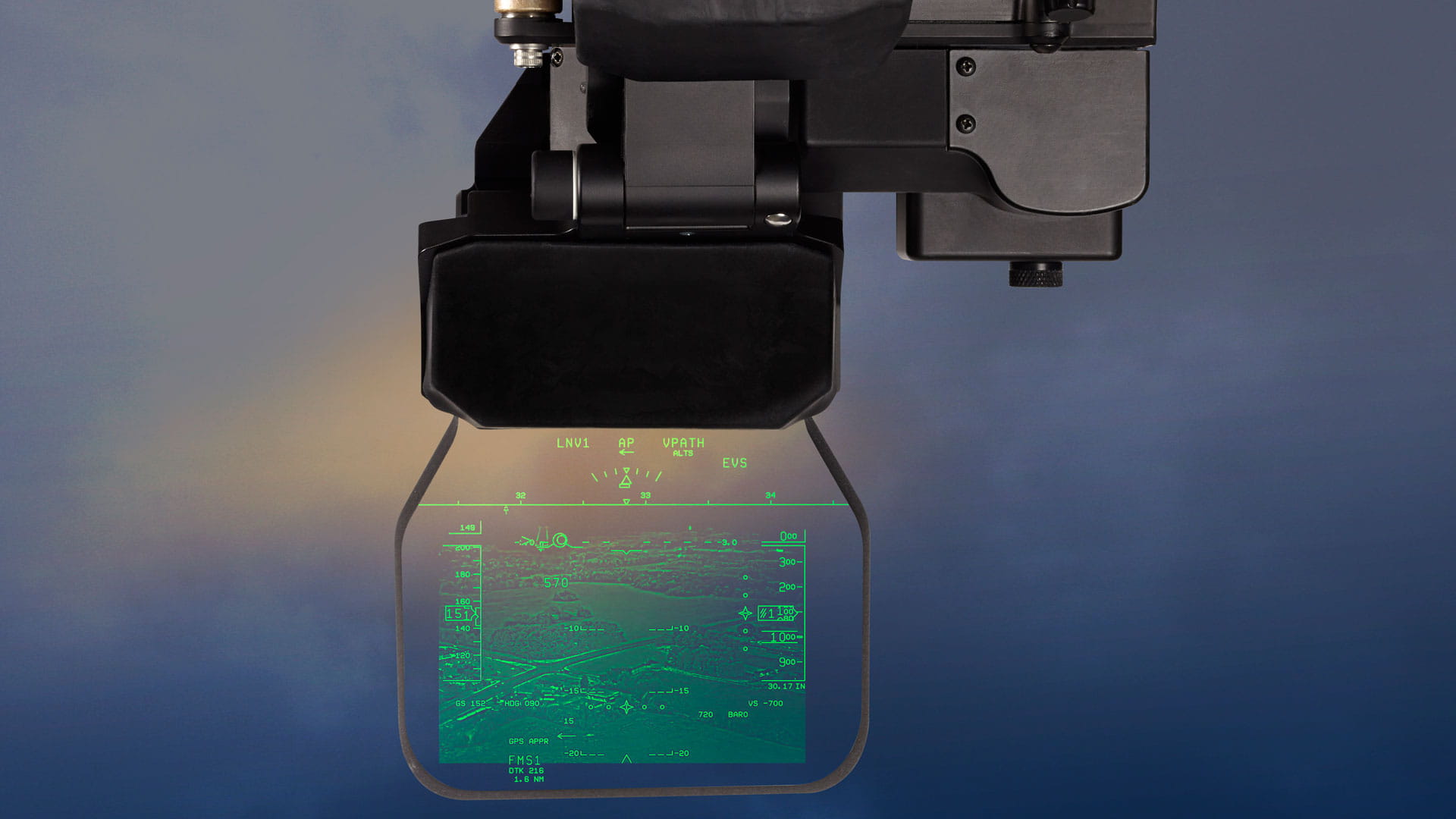Collins Aerospace HUDs guide the way day or night, letting pilots fly consistent approaches no matter what the conditions. With less go-arounds, diversions and cancellations because of low-visibility, you save fuel and keep operations on schedule. It’s why so many of the world’s premier airlines, business and regional operators, military tankers and transports, and even NASA rely on our HUDs and Head-up Guidance Systems (HGS).
Compact HUD

Our Compact HUD has all the same capabilities as our full-sized HUDs, but its compact size makes it ideal for smaller flight decks. Its use of innovative optical waveguide technology to project imagery through the smaller translucent display enables us to minimize the size and cost of the HUD without sacrificing functionality. The Compact HUD is pairable with both our EVS and SVS vision systems.
HGS-6000

Our latest Head-up Guidance System technology for the B737 provides pilots greater situational awareness for more precise touchdowns. It allows them to keep their eyes focused out in front of the aircraft as they view the flight path, acceleration, attitude, airspeed, altitude, visual glidescope and other symbology on the HGS’s LED display overlaid on the outside scene. The HGS-6000 is available as a dual HGS installation for both pilots and is pairable with the EVS-3600.
Key capabilities
- Traffic Collision Avoidance System (TCAS) Resolution Advisory - Flight-path guidance that corresponds to the TCAS vertical speed command, providing the flight path required to achieve the rate of climb or descent to avoid traffic
- Low-visibility takeoff (LVTO) mode - Displayed via primary mode, provides precise navigation guidance for takeoff and enjoys the lowest regulatory minima credit available
- Tailstrike avoidance - Indicates potential tailstrike during takeoff or landing, providing time to correct attitude and reduce the risk of damage
- Rollout guidance - Provides the basis for reduced landing minima in the AIII mode, enables pilots to use guidance to steer airplane through complete landing in low-visibility
- AIII mode with crosswinds - Precise Category II and III guidance for manual flight control in low visibility
- IMC mode - Provides navigation guidance from the flight control computer and displays it as a flight director command
- Primary mode - Used from takeoff to final approach
- VMC mode - Visual glidescope to runway touchdown point that is ideal for night approaches
Request information
I would like more information about this capability.

